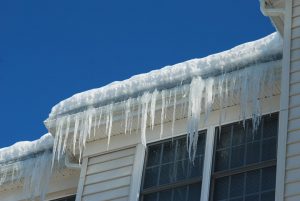Winter Home Preparation, Part 1: Low Temperatures
 Almost 20% of homeowners experience some form of damage to their homes each year due to winter weather. The more prepared the home is for low temperatures and harsh weather, the less likely it is that the home will experience damage. Your physical health is better protected when your home is winterized. Therefore, it is essential for you to consider ways you can fortify your home against the extreme cold as part of your winter home preparation. Let’s take a look at a few key ways to do this.
Almost 20% of homeowners experience some form of damage to their homes each year due to winter weather. The more prepared the home is for low temperatures and harsh weather, the less likely it is that the home will experience damage. Your physical health is better protected when your home is winterized. Therefore, it is essential for you to consider ways you can fortify your home against the extreme cold as part of your winter home preparation. Let’s take a look at a few key ways to do this.
Paint, caulk, and seal
Rot and mold can form in your home in a variety of ways. From broken seals around your windows to cracks in your home’s trim, to unsealed decks, there are any number of ways moisture can wreak havoc on your home during the winter months. To combat this, inspect your home and repair any problem areas with pain, caulk, and sealants.
Clean your gutters
Clogged gutters can lead to ice dams, which cause water to back up and eventually seep into your house. Keep your gutters clear of debris with regular cleaning through the cold winter months.
Test all smoke and carbon monoxide detectors
More heat is needed to combat low temperatures. You may choose to create more fires in the fireplace during these cold months. This means there is more of an opportunity for your home to catch fire. As a protective measure, test your smoke detectors to ensure that they are working properly and replace them if necessary. If you have yet to install a fire alarm system in your home, this is a great time to do so.
In addition, homes are kept locked up tight in winter. Windows and doors are rarely left open. This lack of circulation could be deadly if there is a carbon monoxide leak in your home. As this is an odorless gas, ensure that you have a carbon monoxide detector installed, and test it regularly to see that it is working properly.
Prevent pipes from freezing
Frozen water in your home’s pipes can cause them to burst, which can result in flooding. If there is a leak in your home, it could be hours or even days until you realize it. By this time you may already have serious and expensive problems from water damage. Flood detection can alert you in the event of a leak in your home, potentially saving thousands of dollars.
When water moves in your pipes, it is far less likely to freeze. Keep your faucets at a drip to ensure that water continues to flow when there are going to be exceptionally low temperatures. This will stop the water from stagnating and freezing in your pipes. Temperature monitoring is a good way to stay ahead of these low temps.
Leverage a neighbor’s help
If you plan to leave town during winter, ask a neighbor to check on your home for you while you’re away. Give them a checklist of the essential items you need inspected or done to prevent your home from winter weather damage. Have them call you immediately if they notice a problem.
With these essential winter home preparation precautions in place, your home will be more protected from low temperatures and ready to withstand the winter months.
NEXT STEPS:
- Contact us today to learn more about wintertime safety.
- Learn more about what home security means to us.
- Subscribe to our blog to stay informed about the latest security news and insight.
